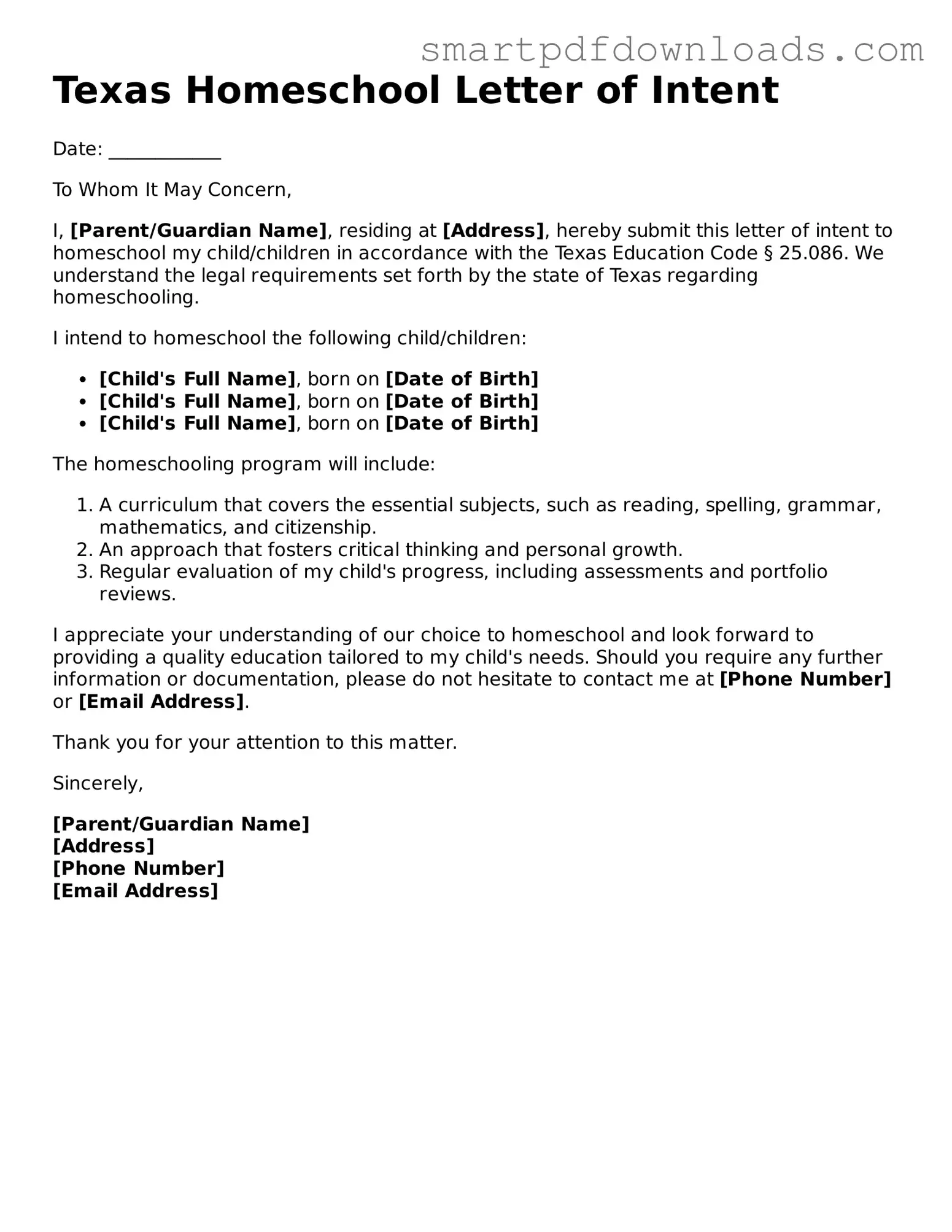Texas Homeschool Letter of Intent
Date: ____________
To Whom It May Concern,
I, [Parent/Guardian Name], residing at [Address], hereby submit this letter of intent to homeschool my child/children in accordance with the Texas Education Code § 25.086. We understand the legal requirements set forth by the state of Texas regarding homeschooling.
I intend to homeschool the following child/children:
- [Child's Full Name], born on [Date of Birth]
- [Child's Full Name], born on [Date of Birth]
- [Child's Full Name], born on [Date of Birth]
The homeschooling program will include:
- A curriculum that covers the essential subjects, such as reading, spelling, grammar, mathematics, and citizenship.
- An approach that fosters critical thinking and personal growth.
- Regular evaluation of my child's progress, including assessments and portfolio reviews.
I appreciate your understanding of our choice to homeschool and look forward to providing a quality education tailored to my child's needs. Should you require any further information or documentation, please do not hesitate to contact me at [Phone Number] or [Email Address].
Thank you for your attention to this matter.
Sincerely,
[Parent/Guardian Name]
[Address]
[Phone Number]
[Email Address]
